Jelena Paušić, & Nikola Rausavljević
CHANGES IN CHILDREN’S POSTURE FROM THE FIRST TO THE THIRD GRADE OF ELEMENTARY SCHOOL
José Antonio Pérez-Turpin, Juan Manuel Cortell-Tormo, Concha Suárez-Llorca, Juan José Chinchilla-Mira, & Roberto Cejuela-Anta
RELATION BETWEEN NUMBER OF PATTERNS JUMPS AND REAL TIME PLAYING AMONG ELITE FEMALE BEACH VOLLEYBALL PLAYERS
Slavko Molnar, Stevo Popović, Dragan Doder, & Aleksandar Joksimović
DESIGNING A BATTERY OF TESTS FOR ASSESSING, MONITORING AND FORECASTING THE RESULTS OF THE ENROLEES AT A FOOTBALL SCHOOL
Saša Bubanj, Ratko Stanković, Borislav Obradović, Edvard Kolar, Jakob Bednarik, Radoslav Bubanj, Emilija Petković, Aleksandar Dimić, & Boris Đinđić
BODY MASS INDEX AS A PREDICTOR OF IMPORTANT DECREASE OF BONE MINERAL DENSITY
Erika Zemková, Peter Miklovič, & Dušan Hamar
VISUAL REACTION TIME AND SWAY VELOCITY WHILE BALANCING ON A WOBBLE BOARD
Jelena Paušić, & Nikola Rausavljević
CHANGES IN CHILDREN’S POSTURE FROM THE FIRST TO THE THIRD GRADE OF ELEMENTARY SCHOOL
Changes in posture indicators, developing from the first grade to the third grade of elementary school, have been identified in a sample of 224 children, 114 female and 110 male pupils, all first graders. Fourteen indicators were used for body posture valuation, measured with a scoliosis meter. The results were processed using quantitative analysis of changes of one sample, measured at two age points using an SSDIF algorithm (Momirović, 1984). The obtained discriminative functions indicate the existence of significant differences between the first and the second, and between the second and the third measurings. Thirteen out of fourteen indicators revealed statistically important increases of average parameter values, thus leading to the conclusion that a child’s muscular system is influenced by new and specific overloads, caused by school obligations.
Keywords: posture, children, primary school, overloads
José Antonio Pérez-Turpin, Juan Manuel Cortell-Tormo, Concha Suárez-Llorca, Juan José Chinchilla-Mira, & Roberto Cejuela-Anta
RELATION BETWEEN NUMBER OF PATTERNS JUMPS AND REAL TIME PLAYING AMONG ELITE FEMALE BEACH VOLLEYBALL PLAYERS
A study was designed to develop a method for analysing jump patterns to quantify jump types and their relationship to real competition in four matches played during the European Beach Volleyball Championships (Valencia 2006). The method used was a quantitative analysis performed with 10 female players taking part in the championships. Video recordings were made of 670 jumps in the four matches played. The finished recordings were analysed using SPSS 13.0. The first significant result of the comparison showed that the mean number of jumps (Mean±SD) was 167.5±38.53 per match, 74.48±5.93 per set and 4.41±1.01 per point. A second group of results showed the percentage spread of the players in different playing actions, with 71% for smash jumps, 20% for service jumps, and 9% for block jumps. Later comparative analysis related real playing time with the quantification of the number of jumps per match, set and point. We conclude that an understanding of the number of jumps is necessary to establish specific time-related training patterns for beach volleyball.
Keywords: beach volleyball, female, European championship, jumps, real time
Slavko Molnar, Stevo Popović, Dragan Doder, & Aleksandar Joksimović
DESIGNING A BATTERY OF TESTS FOR ASSESSING, MONITORING AND FORECASTING THE RESULTS OF THE ENROLEES AT A FOOTBALL SCHOOL
The aim of the research is to design a battery of the tests for assessing, monitoring and forecasting the results of players undergoing training at a football school, based on the forecasting validity of the measuring characteristics of the variables. After the forecasting variables of basic motor abilities have been used, the object of the research is to isolate those variables that have the highest predictive value and impact on each specific motor variable that was used. The sample was a planned one, including 105 respondents, young football players aged 10 (±6 months) who were enrolled at the Vojvodina RMR football school in Novi Sad. Both the sample of variables for assessing basic motor abilities (predictive variables) and the sample of variables for assessing specific motor abilities (criterion variables) were used. Stepwise regression analysis was used in order to determine the smallest number of the predictive variables with the highest partial correlations in the situation where in each subsequent step the variable having the biggest partial influence was eliminated. The most predictive variables with the biggest partial contributions in multiple correlations were obtained and the system of predictive variables with the maximum multiple correlations was reduced; in other words, the battery of tests was designed for assessing specific motor abilities in young football players.
Keywords: battery of tests, motor abilities, stepwise regression analysis
Saša Bubanj, Ratko Stanković, Borislav Obradović, Edvard Kolar, Jakob Bednarik, Radoslav Bubanj, Emilija Petković, Aleksandar Dimić, & Boris Đinđić
BODY MASS INDEX AS A PREDICTOR OF IMPORTANT DECREASE OF BONE MINERAL DENSITY
The research was conducted on a sample of 40 players members of the Železničar Niš football club (professional athletes) and on the Faculty of Occupational Safety student population (40 nonathletes) in order to determine the body mass index (BMI) and bone composition condition of the research subjects. The research included the measurement of bone mineral density (BMD) in the lumbar region of the spinal column and hip articulation of the subjects. None of subjects had previously participated in any such research. The measuring device used for the evaluation of BMD was a state-of-the-art Lunar DPX Dual Energy X-ray Absorpciometry-DEXA densitometer. This research also examined whether BMI can be a predictor of important decrease of bone mineral density values near the spinal column and near the hip articulation.
Keywords: body mass index (BMI), bone mineral density (BMD), prediction
Erika Zemková, Peter Miklovič, & Dušan Hamar
VISUAL REACTION TIME AND SWAY VELOCITY WHILE BALANCING ON A WOBBLE BOARD
The study investigates the reaction time and sway velocity while responding to visual stimuli while balancing on wobble board. A group of 22 PE students responded in random order to either one or two visual stimuli while standing on unstable support surface for a period of three minutes. During the task, both sway velocity and reaction time were measured. Centre of pressure (COP) velocity was registered at 100 Hz by means of the posturography system FiTRO Sway Check based on a dynamometric platform. Simple and multi-choice reaction times were measured using FiTRO Reaction Check. The results showed no changes in simple reaction time while balancing on the wobble board (394.3 ± 27.6 ms and 432.7 ± 31.1 ms, respectively). However, multi-choice reaction time significantly (p ≤ 0.05) increased from an initial 5-sec to the final 5-sec period of the test (from 644.1 ± 35.2 ms to 714.5 ± 43.6 ms). In contrast, COP velocity gradually decreased during the simple reaction task (from 159.2 ± 30.2 mm/s to 135.0 ± 25.0 mm/s). When responding on two stimuli, there was a significant (p ≤ 0.05) decrease in COP velocity for an initial 2:15 min (from 144.5 ± 28.8 mm/s to 102.4 ± 18.1 mm/s), which was followed by its slight increase toward the end of the test (126.6 ± 22.8 mm/s). Interestingly, the multi-choice task induced greater balance improvement in comparison to simple reactions. It may be concluded that reaction time increases while balancing on wobble board, whereas sway velocity declines when concurrently performing reaction task.
Keywords: dynamic balance, simple and multi-choice reaction time









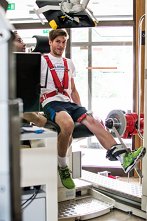

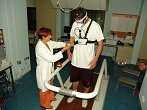

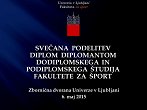










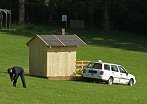
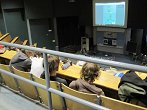









.png)